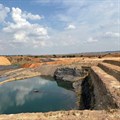Corobrik is clarifying the situation regarding its alleged coal mining at the Rietvlei clay quarry, in response to the recent Greenpeace petition that is being shared. The company explains that the best way to ensure the long-term viability of its clay quarry next to the environmentally sensitive Rietvlei Nature Reserve in Centurion, is to remove the coal deposits that have been found.

Nick Booth, Corobrik CEO
The company claims that contrary to what the petition says, it is not opening a coal mine, and is simply taking out the coal deposits so that they can keep operating the clay quarry, which has not caused any disturbance to the nature reserve for the last 40 years.
“Bearing in mind that that there is already an established coal mining operation in the area, we have operated our Rietvlei quarry sustainably for 40 years due to our successful mitigation measures,” comments Corobrik CEO Nick Booth.
With the removal of the coal deposits, there will be no additional threat to the nature reserve. Booth adds that the discovery of coal has required a few minor adjustments to Corobrik’s environmental planning or mitigation measures at its clay quarry.
“In terms of the responsible way that we mine, it does not affect our planning or the manner in which we conduct our environmental mitigation, but the storage and removal of coal does require additional environmental controls,” notes Booth.
The brickmaker mines three different types of clay at Rietvlei. Upon discovery of a small narrow coal seam, it applied to the Department of Minerals and Energy (DMRE) as early as 2022 to obtain a licence to mine the coal to remove it and secure ongoing access to the clay reserves present.
“Due to the coal deposit that needs to be removed, the DMRE required us to reapply for the permit and restate everything we have done in terms of our original mining licence,” says Booth.
The challenge posed by normal coal mining, such as the existing operation near the clay quarry, is that it involves box cut surface excavation that strips land.
“In coal mining, all of the overlying layers are removed. Yes, the topsoil is placed on the side, but all the other layers are intermingled,” stresses Booth.
All coal deposits have clay overlayers, but not necessarily usable clay due to the nature of the coal deposits
The stored material is ultimately used as a 'hodgepodge’ of a backfill material containing a lot of waste coal.
“It is a lot less environment-friendly a process from a sustainability perspective than the normal operation we undertake in our clay quarries,” says Booth.
“There are a number of issues around quarries from a sustainability or an environmental impact point of view. One is obviously to adhere to best practice to generate minimal waste.”
This involves drilling ahead of the quarry in order to understand the clay deposits and reduce the quantity of overburden that needs to be removed. Planning must also consider surface water collection, which involves trenching, containment, and pumping.
Acid mine drainage concerns refuted
For the past 40 years, no water has left the site due to the berm that surrounds the property, the company claims. Therefore, the concern of acid mine drainage because of the coal removal is not an issue.
Corobrik says it conducts regular and stringent testing of water at the site, both on surface water and from boreholes, which are tested once a quarter for any contaminants.
“The ultimate aim is to reuse that as process water, either as dust suppression or even back into manufacturing in order to conserve this precious resource,” highlights Booth.
Another consideration is natural vegetation, but the company claims it is fortunate in that its clay quarries do not have an impact on the natural environment.
The reason I say that is most, if not all, our sites have been in operation for a long time and are pretty much established as mining sites
Another environmental consideration is the presence of fossils, but here the clay is mostly shale and only contains basic plant-type material, if any. The biggest mitigation method implemented around a clay quarry is dust suppression, especially as clay is a very fine particle.
“Dust suppression is absolutely critical in terms of not impacting the surrounding community,” says Booth.
“Those are really the only major impacts in terms of our clay quarries from a sustainability point of view. In the long term, office complexes and housing developments can be found on rehabilitated quarry sites. Landscaping is carried out accordingly to fill the space. Due to the fact that backfilling is carried out with old materials, it generally makes the land very usable from a construction point of view,” says Booth.
Site rehabilitation
However, there is the possibility of returning the site to agricultural use because the overburden and topsoil are removed and stored separately.
“With backfilling, the topsoil is returned with all its seeds present. The grass usually grows back very quickly as long as you have a decent rainy season. Generally, the land recovers very quickly.”
“From a sustainability point of view, clay is a very environment-friendly material to mine. It is not a mineral rock like platinum or gold that requires crushing and processing with its attendant chemical processes.," concludes Booth.
"We are simply using the natural clay for brickmaking. Brick is a sustainable building material and is well accepted as such. From a quarrying and sustainability point of view, it involves one of the greenest mining processes possible.”









































